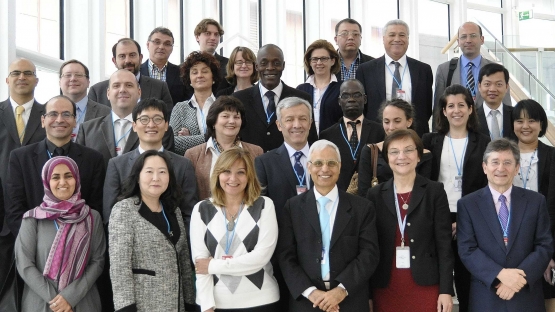Referring doctors should be informed of their patients’ radiation exposure history and have access to images from previous medical examinations, concluded experts at an IAEA technical meeting held in Vienna last week. The general approach in medicine is that radiation dose limits do not apply to patients. The risks of radiation exposure incurred by patients undergoing medical diagnosis and treatment should be outweighed by its benefits.
Most patients usually undergo few radiation exposing examinations, but over the last few years a trend has emerged and the number of computed tomography (CT) scans some patients undergo has increased significantly. Much of this increase is of benefit to the patients, but several recent studies and IAEA reports have indicated that a significant fraction of imaging studies, in particular CT studies, may not be justified.
“Various approaches have been employed to handle the issue of unnecessary radiation doses to patients through unjustified examinations, and informing referring doctors about radiation risks can be one of the tools for strengthening the process of justification,” said Madan Rehani, a radiation safety specialist, who chaired the the meeting. “Over the last few years some countries have taken action to address this issue by incorporating radiation dose in procedure tracking. This meeting was a chance for exchanging experiences and knowing if there are adverse lessons from those who have used patient exposure tracking.”
In 2009, the IAEA launched its ‘smart card’ programme, an initiative encouraging countries to record patient radiation doses and to create a lifetime record of exposure for individual patients. While the programme is called ‘smart card’, no physical cards are involved, and the details of a patient are tied to a digital signature and stored in a national or hospital database.
Different ways to establish a data collection programme
This year Algeria is starting a programme to fight cancer by developing its health sector and building ten new, well-equipped university hospitals around the country. These new facilities have raised the profile of the use of radiological procedures. The country is now working on gathering exposure data and developing a central database for these new hospitals.
Algeria has made progress in implementing an ID system with a smart card to gather data from patients — over 85 per cent of the population is covered so far. Initially radiation exposure tracking was limited to occupational radiation risks, but it is now being expanded to patients by being incorporated into the national health record system. The country is working to implement an electronic medical record, which will include dose tracking, first in its public health system, and in a secondary phase, it will oblige the private sector through legislation to follow suit.
Algeria’s challenges are different from most. “Eighty per cent of Algeria’s territory is covered by desert, and although the health centres located in the desert are well equipped, they are far from the data centres situated in the north,” explained Boudjema Mansouri, Head of the National Center of Medical Imaging at the university hospital of Bab El Oued. “So a main objective of the Ministry of Health is to link the hospitals in the south of the country to the data centres in the north.”
Providing patient dose information along with clinical information in imaging studies is of added value, said Andrus Aavik from Tartu University Hospital, Estonia. Estonia has already established a national electronic health system and has gained more than five years of experience with radiological procedure and dose tracking.
Collecting dosimetry data and understanding it
The technical meeting drew attention to the issue of patient dose tracking to a wider audience beyond just radiologists, radiation protection experts and medical physicists, Rehani said. “This topic is a dynamic topic and is at a crucial stage. The meeting took steps to involve referring physicians, who are now taking the discussion in new directions with new issues and perspectives. The referring doctors present in the meeting agreed that information on radiation doses and cumulative dose be provided as a standard part of the patient record and it should be kept visible to a clinician without having to look into a separate system. The educational system should also train doctors about the risks of overexposing patients to radiation during medical examinations and how it can be avoided.”
The 36 experts from 26 countries met from 28 to 30 April at the IAEA's Vienna Headquarters. They concluded that there is a substantial opportunity and need to improve education and maintain competence of practitioners pertaining to radiation risk. Any clinician who refers a patient for a radiological examination should have knowledge about typical radiation doses associated with imaging examinations, and an understanding of the associated risk.
This topic is a dynamic topic and is at a crucial stage. The meeting took steps to involve referring physicians, who are now taking the discussion in new directions with new issues and perspectives.



